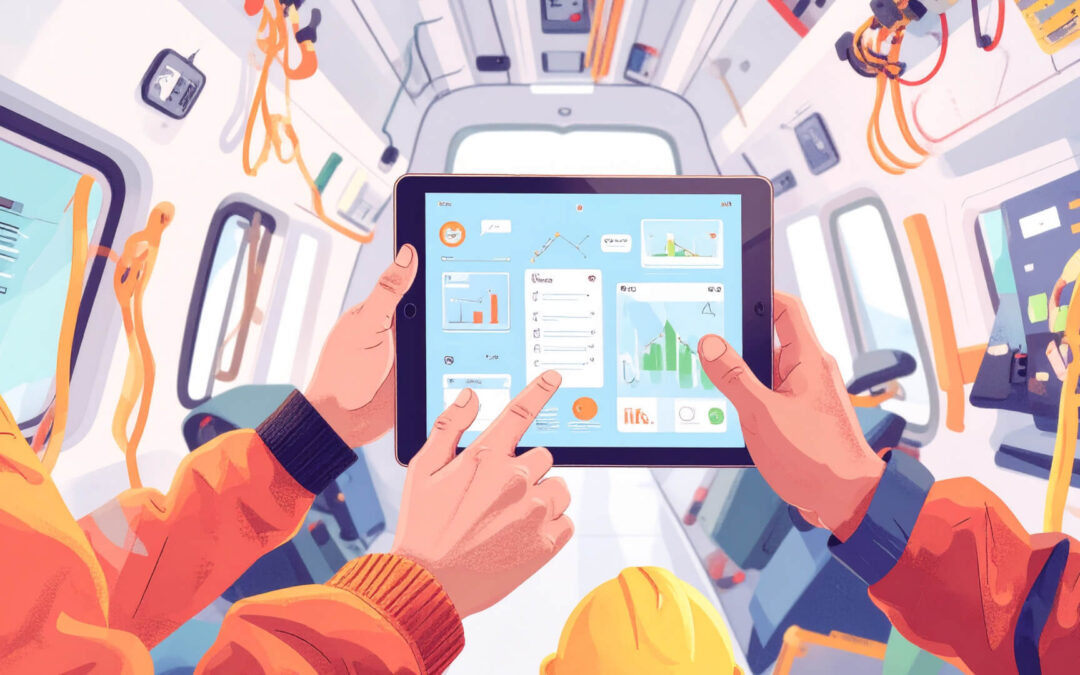The wind energy sector across the UK and European Union continues to surge, fueled by aggressive climate targets and massive infrastructure investments.
However, this rapid expansion has exposed a critical bottleneck: a shortage of skilled, verified technicians who can confidently and safely operate and maintain wind turbines in the field.
For employers, the challenge isn’t just finding candidates—it’s proving that these candidates possess the hands-on technical competence necessary to perform under demanding conditions.
The Skilled Technician Shortage in UK & EU Wind Markets
The UK government’s commitment to reaching 40GW of offshore wind capacity by 2030 as outlined in the Offshore Wind Sector Deal has created an unprecedented demand for skilled workers.
Similarly, the WindEurope 2025 Workforce Report highlights that the EU will need an estimated 450,000 new wind energy jobs by 2030, with technicians forming the backbone of this workforce.
Despite this demand, there remains a significant gap between the number of available technicians and those with verified, field-ready skills. Many candidates entering the job market lack industry-recognized certifications or practical experience, making it difficult for recruiters to assess their true readiness for the job.
This shortage is exacerbated by retirements of experienced workers and the technical complexity of modern turbines, which require advanced troubleshooting and safety skills.
Why Traditional Hiring Methods Fall Short
Recruitment in the wind energy sector traditionally relies on CV reviews, interviews, and generic certifications. However, these methods often fail to provide a reliable measure of a candidate’s practical ability to perform in the field. For example:
- CVs may list relevant roles or training but cannot confirm the quality or recency of hands-on experience.
- Interviews tend to focus on theoretical knowledge or soft skills but rarely simulate real-world technical challenges.
- Standard certifications may not be specific enough to validate proficiency with the latest turbine models or safety standards.
This disconnect leads to longer onboarding periods, increased training expenses, and, most importantly, safety risks due to unproven competence in high-risk environments.
GML’s Innovative Approach: Verified Microlearning and Digital Assessments
GML (Global Microlearning Labs) addresses these challenges through a cutting-edge combination of modular microlearning and digital competency assessments, designed specifically for the wind energy sector. Their approach is inspired by the success of platforms like Duolingo, which certifies language proficiency through incremental lessons and standardized testing, but tailored to technical skills.
Modular, Role-Specific Learning Paths: GML offers targeted microlearning modules that cover critical competencies such as turbine maintenance, electrical systems, safety procedures, and troubleshooting. These modules are designed to be completed flexibly and focus on practical application.
Field-Based Exercises: Candidates engage in simulated or real-world tasks that replicate the challenges technicians face on-site. This hands-on training is crucial for building confidence and demonstrating capability.
Digital Quizzes and Competency Assessments: Following each module and exercise, candidates complete digital assessments that objectively measure their skill level. These assessments generate verifiable digital credentials that hiring managers can trust as proof of hands-on ability.
This comprehensive approach enables recruiters to track a candidate’s progress and validate their readiness before hiring, reducing uncertainty and risk.
Benefits: Faster, Smarter Hiring with Lower Risk
Integrating GML’s microlearning and digital assessment platform into recruitment processes offers several tangible benefits:
Accelerated Hiring: Verified skill profiles allow hiring managers to quickly shortlist candidates who meet technical requirements, reducing time-to-hire.
Reduced Onboarding Risk: Candidates arrive on-site with proven competencies, minimizing the need for extensive remedial training and lowering the risk of accidents or errors.
Cost Efficiency: Focused upskilling through microlearning reduces overall training costs and improves workforce productivity.
Improved Safety and Reliability: Deploying technicians with validated skills enhances operational safety and turbine uptime, critical factors in maintaining wind farm profitability.
Conclusion
As the UK and EU wind energy sectors race to meet ambitious renewable targets, the ability to prove technical competence has become a strategic imperative. Traditional hiring methods no longer suffice in an environment where safety, efficiency, and technical complexity are paramount.
GML’s innovative microlearning and digital assessment platform offers a scalable, practical solution to bridge the skills gap, empowering employers to hire confidently and accelerate the transition to a greener future.
FAQ
Why is there a technician shortage?
Rapid industry growth and retiring experts have created a gap in verified, hands-on skills.
Why don’t traditional hiring methods work well?
CVs and interviews can’t reliably prove real-world technical ability or up-to-date expertise.
How does GML help?
GML uses microlearning and digital tests to verify practical skills before hiring.
What are the benefits of verified competence?
Faster hiring, less training, improved safety, and better turbine performance.
How many new wind jobs will the EU need by 2030?
About 450,000 new jobs, mostly technicians.
How can the skills gap be fixed?
By boosting training, certifications, and hands-on learning in the industry.




